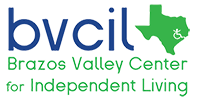Friday, July 26, 2013 is the 23rd anniversary of the signing of the Americans with Disabilities Act. As such, July 26 now marks ADA Awareness Day each year.
What is the ADA?
The Americans with Disabilities Act, or ADA, is a federal law that extends to individuals who have disabilities the right to equal access and opportunity in the areas of employment, transportation, public services, and telecommunications. Senator Tom Harkin of Iowa initially sponsored the ADA in Congress, and President George H. W. Bush signed it into law on July 26, 1990. Implementation began in 1992, and in 2009 Congress passed some important updates and clarifications to the original law.

Everyday ADA
So what does the ADA mean to people who have disabilities in their everyday lives? Ah, let us count the ways—23 of them to honor this year’s anniversary!
- Qualified people who have disabilities now get the same consideration as everyone else when applying for jobs.
- Workers who have disabilities can ask for reasonable accommodations to help them meet their essential job functions.
- Workers who have disabilities enjoy more privacy now because their employers can’t ask them personal or non-job-related questions about their disabilities.
- People who have disabilities can choose to have someone advocate for them when asserting their rights under the ADA.
- Employers who have technical questions about ADA compliance and how to best help their employees who have disabilities can get guidance and answers from www.ada.gov.
- New public buildings now have accessible features such as ramps and elevators, and many older ones have been made accessible.
- Sidewalks now have “curb cuts” so that people who use wheelchairs can access them and cross streets more safely.
- Public restrooms now have at least one stall fitted with grab bars that can accommodate a wheelchair.
- People who have low vision or no vision can request printed material from businesses and public entities in alternative formats such as large print and Braille.
- People who have disabilities no longer have to fear and deal with being turned away from public places.
- Nowadays, entities that provide transportation to the public also provide accessible service to people who have disabilities.
- People who have hearing impairments can now communicate more easily thanks to enhanced devices and networks that handle text.
- Students who have disabilities can also now get reasonable accommodations to help with campus access, optimal classroom seating, and test taking.
- Persons with disabilities who use service dogs can now take their dogs that are specially trained to assist them any place the public is allowed.

- People who have developmental disabilities can navigate the public environment more easily and safely thanks to signs that have pictures as well as words, such as those found outside public restrooms.
- People who have low vision, or no vision at all, can now navigate their environments more independently because of Braille markings on doors and elevators.
- Even web sites are becoming easier to use thanks to provisions in the ADA.
- People with disabilities who have experienced discrimination in violation of the ADA can now go to court to have the discrimination or lack of access corrected.
- In public places, store shelves, water fountains, towel dispensers, displays, and even buffets are now better labeled, designed and positioned to allow people who have disabilities to access them.
- Store aisles are now much wider to allow two wheelchair users to pass each other comfortably.
- People with disabilities who use adaptive devices can now take their technology that is specifically designed to assist with their disabilities anywhere the public is allowed, such as taking a white cane through airport security.
- The ADA has given rise to a concept called “universal design,” which entails designing buildings, environments, and even objects so that everyone can use them, regardless of their functional or access needs.
- The ADA has raised much awareness about disabilities and how people who have them live, work, travel, transact, and communicate.

Of course the ADA has far more than 23 benefits. With that in mind, we look ahead to the upcoming Silver Anniversary in 2015—the ADA Legacy Project! For more information and to participate, please visit: http://www.facebook.com/ADALegacy.








